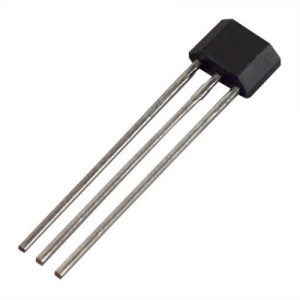Proximity sensors have emerged as pioneering devices at the forefront of connectivity and automation, ushering in a new era of seamless interaction between humans and technology. These sensors are instrumental in detecting the presence, absence, or position of objects or individuals in their immediate vicinity, playing a crucial role in various industries, from manufacturing and automotive to consumer electronics and smart homes. One of the key features that make proximity sensors pioneering is their ability to bridge the physical and digital worlds. By employing a range of technologies such as capacitive, inductive, ultrasonic, and optical, these sensors can accurately gauge the proximity of objects without any physical contact. This non-intrusive approach minimizes wear and tear, making them highly reliable and cost-effective solutions for various applications. The sensors have become integral components in industrial automation, where they facilitate efficient and safe production processes by ensuring that machines and robots can sense their surroundings, avoiding collisions and optimizing workflows.

The advent of the Internet of Things IoT and Industry 4.0 has further propelled the importance of proximity sensors. These sensors are essential in enabling devices and machines to communicate with each other, gather data, and make informed decisions in real time. For instance, in smart homes, proximity sensors are used to automatically turn on lights, adjust thermostats, and open doors when a person enters a room, enhancing energy efficiency and convenience. In the automotive industry, they contribute to advanced driver-assistance systems ADAS, playing a critical role in ensuring the safety of drivers and pedestrians by detecting nearby objects and facilitating features like adaptive cruise control and parking assistance in sensor de efecto hall. Proximity sensors also have a pivotal role in enhancing user experiences. In the world of consumer electronics, smartphones and tablets employ these sensors to detect the proximity of a user’s face, allowing the device to intelligently turn off the display during phone calls to conserve power and prevent accidental touches.
Furthermore, proximity sensors are making remarkable strides in the healthcare sector. They are used in touchless technologies for monitoring patient vital signs, allowing healthcare professionals to collect data without physical contact, minimizing the risk of contamination and ensuring patient comfort. These sensors are revolutionizing the way healthcare is delivered, especially in critical situations like. In conclusion, proximity sensors have established themselves as groundbreaking components that foster connectivity and automation across a wide range of applications. Their non-intrusive nature, ability to bridge the physical and digital realms, and contribution to IoT and Industry 4.0 have propelled them to the forefront of technology in proximity sensor supplier. From manufacturing and automotive industries to smart homes and healthcare, proximity sensors are transforming the way we interact with our environment and technology, making our lives safer, more efficient, and more convenient. As technology continues to advance, the role of proximity sensors in pioneering connectivity will only become more significant.
